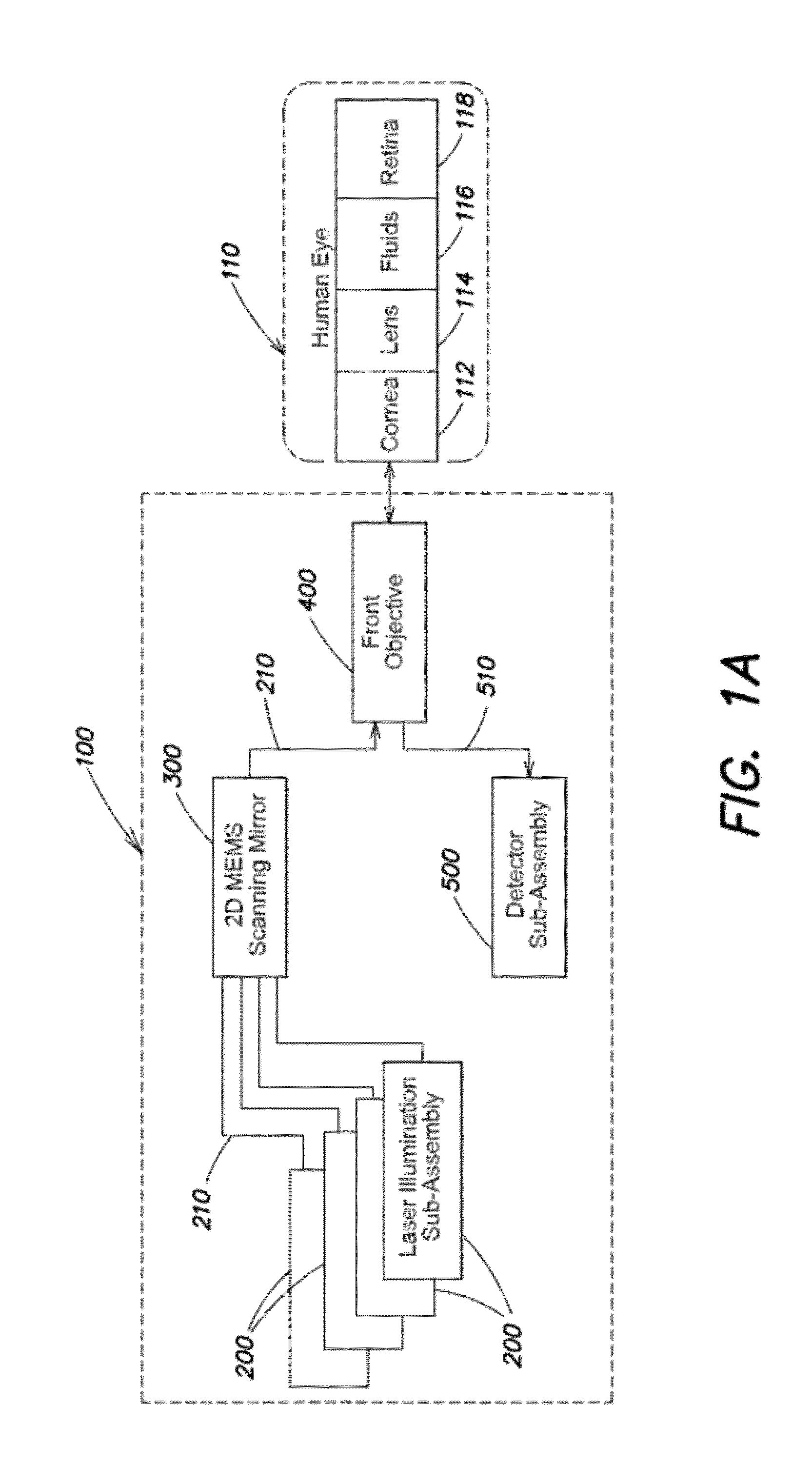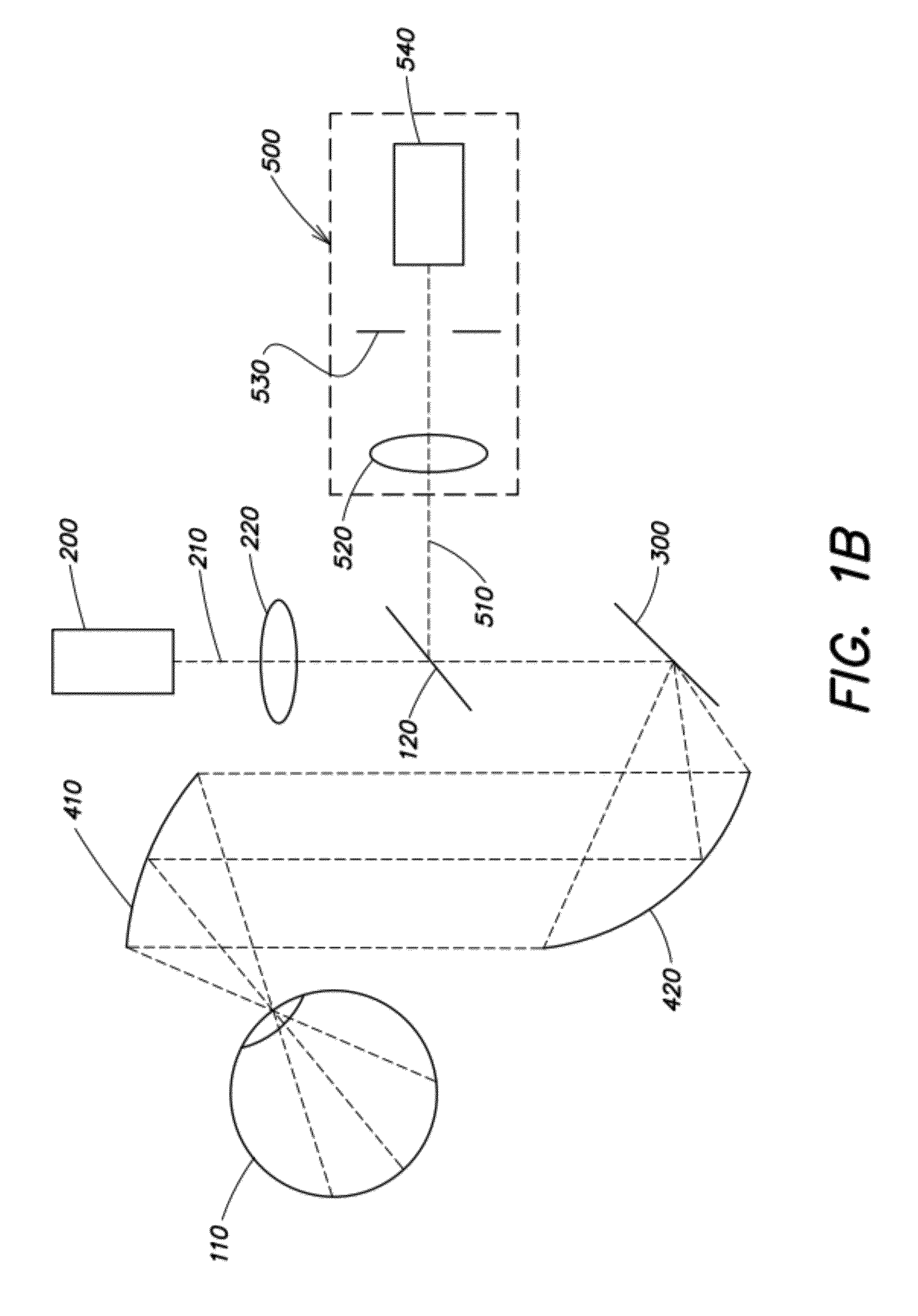Portable self-retinal imaging device
a self-retinal imaging and self-retinal technology, applied in the field of self-retinal imaging devices, can solve the problems of poor diffraction-limited resolution on the retina, difficult to manufacture to clinical standards, and complex design of instruments, and achieve the effect of robust scanning, small size and weigh
- Summary
- Abstract
- Description
- Claims
- Application Information
AI Technical Summary
Benefits of technology
Problems solved by technology
Method used
Image
Examples
Embodiment Construction
[0055]Aspects and embodiments are directed to a compact, wide-field scanning laser ophthalmoscope configured to enable handheld, portable use, for example, in remote locations and primary-care-physician offices, and for self-administered retinal imaging. Portable, self-administered retinal imaging would be invaluable for screening remote populations for eye disease, and for screening warfighters for ocular injury in the battlefield, to monitor immediate ocular effects of battlefield trauma. Similarly, retinal imaging in a physician's office would greatly improve the efficiency of screening diabetics for retinopathy, for example. Conventional table-top retinal imaging devices are too large for such applications and / or require a trained expert to operate.
[0056]According to one embodiment, self-administered, wide-field imaging of the retina in a compact, portable hardware footprint is achieved with a MEMS-based scanning laser ophthalmoscope (MSLO). To enable robust scanning in a portab...
PUM
 Login to View More
Login to View More Abstract
Description
Claims
Application Information
 Login to View More
Login to View More - R&D
- Intellectual Property
- Life Sciences
- Materials
- Tech Scout
- Unparalleled Data Quality
- Higher Quality Content
- 60% Fewer Hallucinations
Browse by: Latest US Patents, China's latest patents, Technical Efficacy Thesaurus, Application Domain, Technology Topic, Popular Technical Reports.
© 2025 PatSnap. All rights reserved.Legal|Privacy policy|Modern Slavery Act Transparency Statement|Sitemap|About US| Contact US: help@patsnap.com



